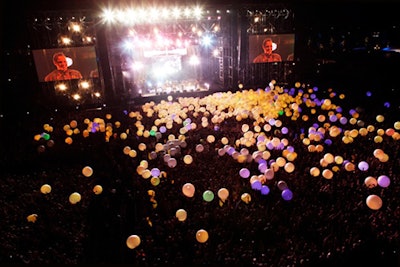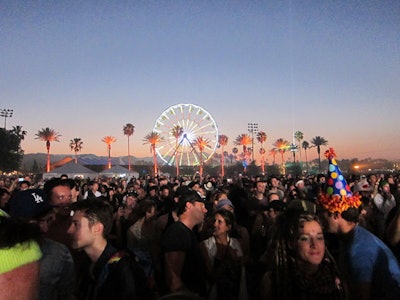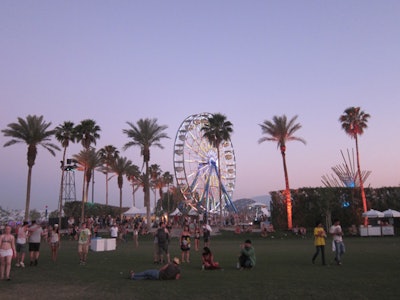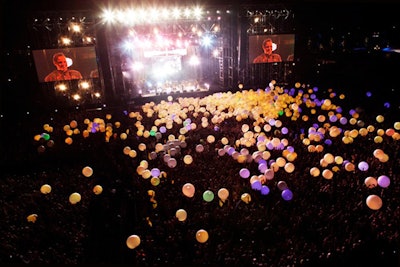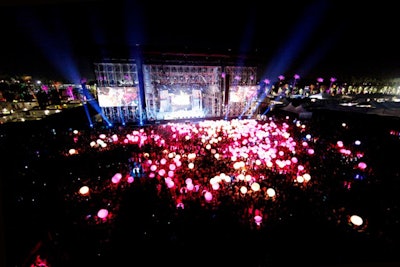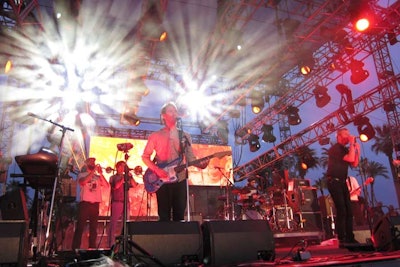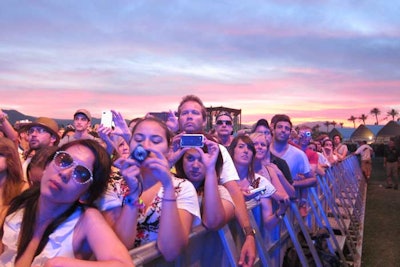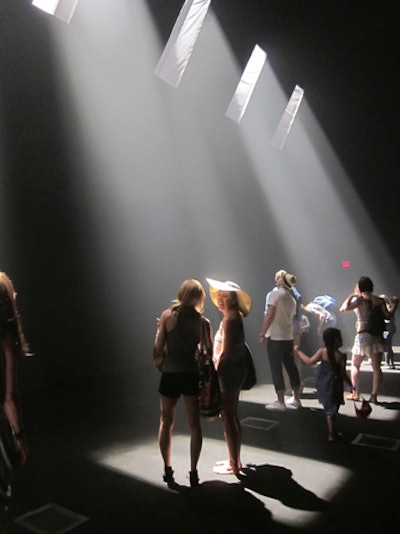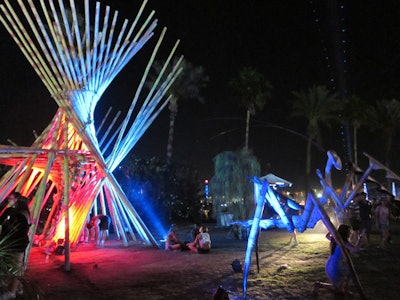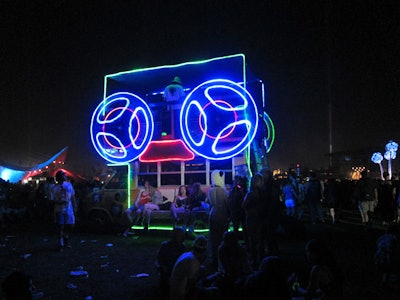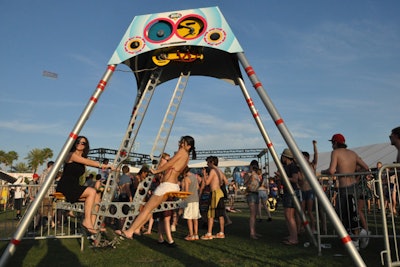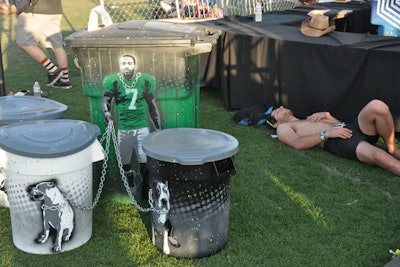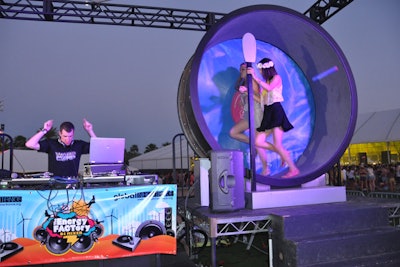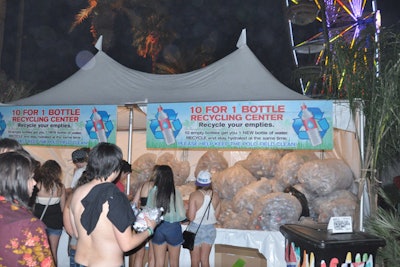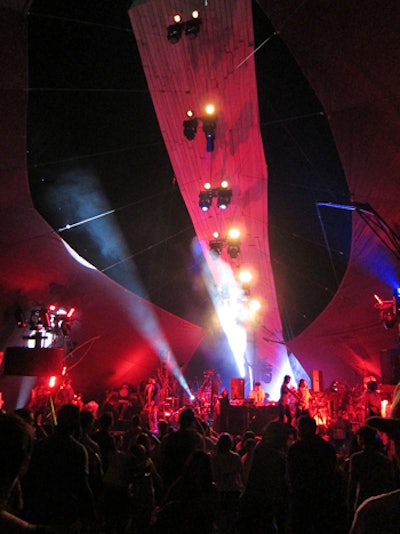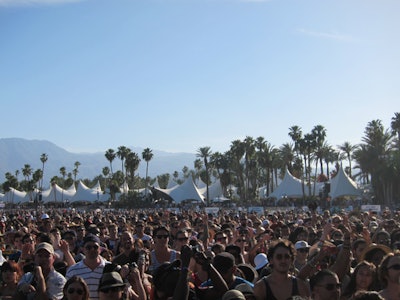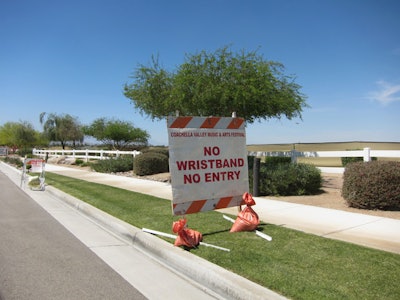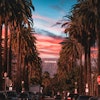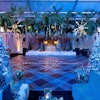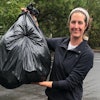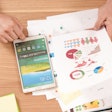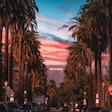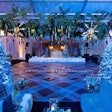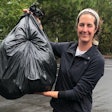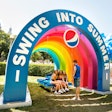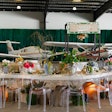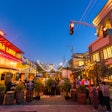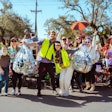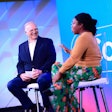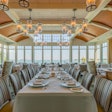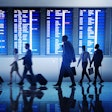The annual desert pilgrimage known as the Coachella Valley Music and Arts Festival just wrapped its three-day run at the Empire Polo Club in Indio—where temperatures for the throng of high-energy attendees hovered around 100 degrees—with headliners Arcade Fire, Kings of Leon, and Kanye West, who closed out the weekend amid a hail of pyrotechnics. Festival producer Goldenvoice seemed once again to have nailed the golden formula, selling out three-day passes—at a cost that soared well above $300, including fees and extras, with no cheaper single-day option—in a record six days.
In part, the success of the festival, led by Goldenvoice's Paul Tollett, rests on its continual reinvention. A significant part of that reinvention this year came in the form of creative programming help from a group called the Creators Project, a venture between Vice magazine and Intel that brings together global artists with technology. The partnership with the Creators Project (itself now in its second year) marked Coachella's first-ever creative partnership and the project's first appearance on the West Coast. "Goldenvoice has worked with sponsors before, but this is the first time they've had a creative partner," said L.A.-based Creators Project executive producer Mitch Kirsch, over the cacophony of beeping vehicles on site during the huge, nine-day load-in. "We're helping Coachella reinvent the festival experience, and we are further enhancing it."
The group—which brought a team of about 150 to the desert, including producers, vendors, and folks from Vice and Intel—worked closely with Goldenvoice to infuse creative technology into the festival by bringing in international bands and working with Goldenvoice-secured headliners for high-tech and special-effects-filled performances. They also reinvented the dance tent with a light installation by Muti Randolph and recreated the main stage with a custom-fabricated, cubelike light installation from United Visual Artists.
The Creators Project also brought in an art installation known as "Untitled," a physical manifestation of Spiritualized's "Ladies and Gentlemen We Are Floating in Space," by Jonathan Glazer and J. Spaceman, inside a custom structure designed by architectural firm Undisclosable. The piece made use of light and music inside an enclosed space over roughly 4,000 square feet, almost four stories tall.
The project also pulled off a special-effects stunt for Arcade Fire's headlining performance, which Kirsch described as "quite mind-blowing—quite a moment." The group, directed by Chris Milk on the project, released 1,250 high-tech beach balls during the performance, which came cascading down on the audience. And then, at a climactic moment during the set, the balls, outfitted with LED light units and radio transmitters, came to life by way of a computer system that mapped them and knew where each was amid the crowd. The whole audience effectively became a screen, with each of the balls as one of the pixels.
Returning to the festival grounds was the environmental group Global Inheritance, which brought along a lineup of its innovative eco-friendly programming, including a new "energy swing," which implored fans and festivalgoers to use their bodies to power the DJ Mixer stage. The group also brought back its Trashed program, in which 50 artists redesigned recycling bins for the chance to win V.I.P. Coachella tickets.
Among the other brand tie-ins on the festival grounds were Vizio, the official HD sponsor, which set up an air-conditioned lounge that offered free Wi-Fi and comfortable seating for attendees to check out 3-D gaming, 3-D and Internet-enabled TVs, and a new tablet and smartphone. And at the PlayStation Loft, guests could play unreleased games like Infamous2 and a new Mortal Kombat. At the Hyundai Base Camp, attendees could make use of free Wi-Fi, power charging, and air-conditioning.
Food trucks such as Kogi and Border Grill made an appearance under the white peak tents of the beer garden and V.I.P. area. Local Restaurants Fisherman's Market, Las Casuelas La Quinta, Cliffhouse, Ruth's Chris Steak House, Pepper's Thai, and Harry's Smoke House served food on site. The Terrace, a new area by the entrance—part of the festival footprint's total redesign—this year became the main food hub, with lots of shade, seating, and a DJ for better crowd control and flow.
Indeed, crowd control and security were among organizers' chief concerns at the festival, which last year suffered from over-swelled crowds due to gate crashers estimated in the tens of thousands. Access to the 2011 fest came in the form of counterfeiter-foiling, computer-chip-equipped wristbands, distributed close to event date, and a perimeter set up around the festival boosted security. Vehicle checkpoints were meant to keep non-wristband holders far off premise, and the will-call and ticket office moved off site, to the Indian Wells Tennis Garden, to further loosen the congestion. Overall, the vehicle traffic to and from the festival, as well as the traffic flow of bodies on the festival grounds, seemed significantly improved—even comfortable.
Also furthering Goldenvoice's ongoing efforts to increase attendee comforts were free yoga classes prior to the festival each day, as well as high-end showers for campers. "For $5, you can shower like a rock star," Goldenvoice advertised, which didn't seem like much in the scheme of the high-cost—not to mention dirty and sweltering—weekend.
